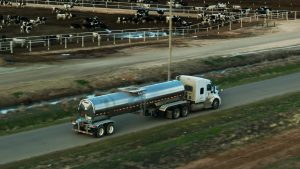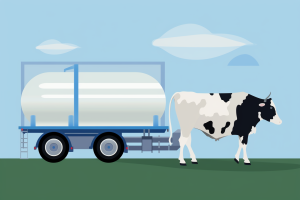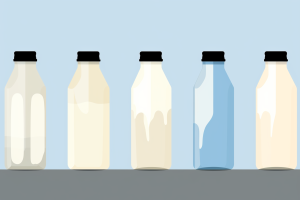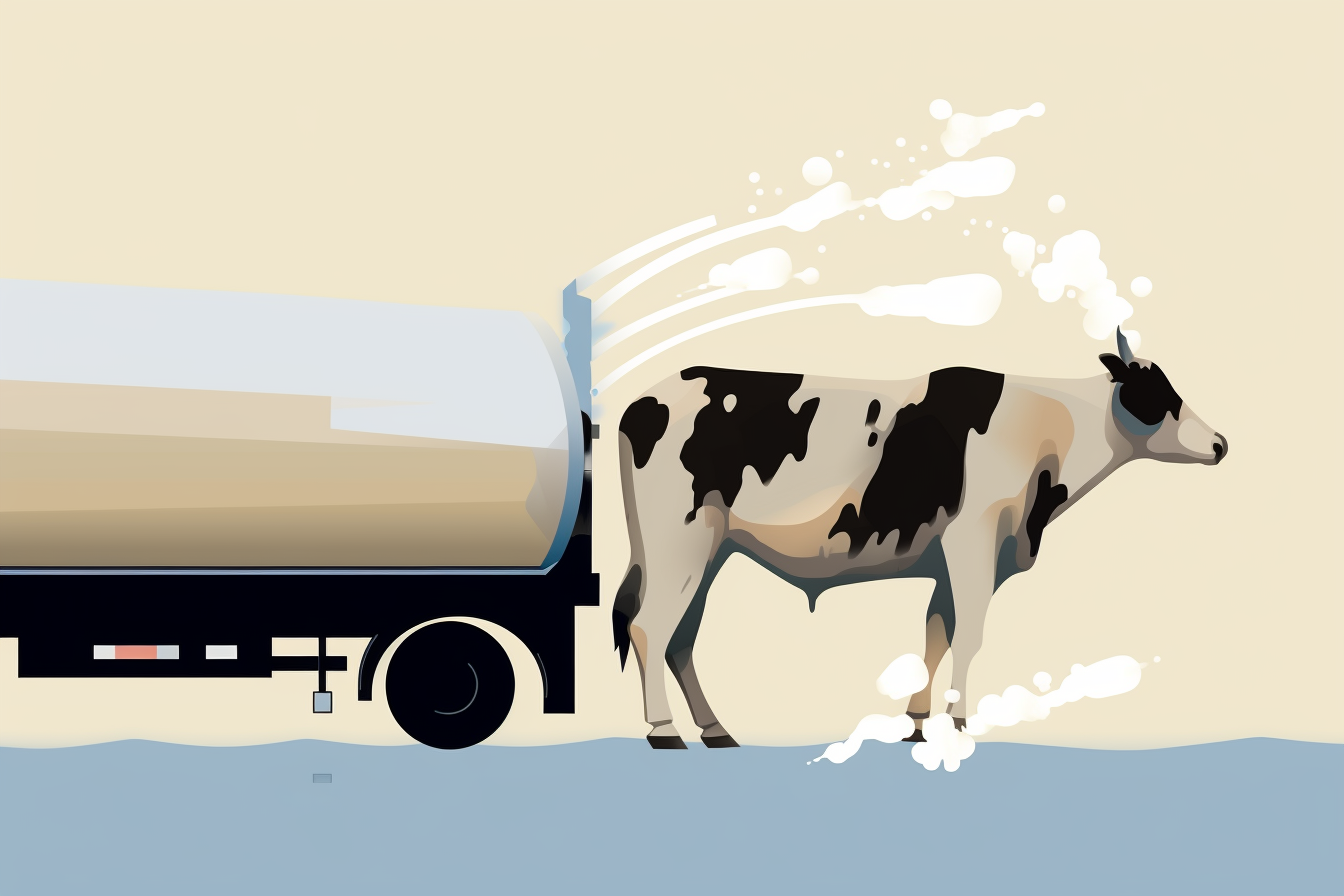The dairy industry is facing an uphill battle with the rising costs of milk hauling. Transporting milk from farms to markets, whether to fluid milk plants or manufacturing plants, has become a complex and expensive endeavor. This article delves into the challenges and how the industry is adapting. For more insights into the challenges facing the dairy industry, explore our page on the dairy industry.
Understanding the Rising Costs of Milk Hauling: The Growing Complexity of Milk Hauling

The complexity and cost of moving milk from farms to markets are on the rise.
Dairy Farmers of America (DFA), a major player in the industry, uses a mix of cooperative-owned trucks and trailers (70%) and contract haulers (30%) for milk transportation. However, the movement of milk from farms to plants is not a straightforward process.
To understand more about the role of DFA in the dairy industry, follow this link.
The Impact of Production Variations and Market Changes
“Variations in production at the farm level and changes in the volumes needed at plants require loads to be cut or added, often with very little notice. This has always been a challenge, but it has become increasingly difficult to manage over the past few years.”
– Corey Gillins, the chief operating officer of DFA’s Mountain Area Council
Enjoying our insights?
Subscribe to our newsletter to keep up with the latest industry trends and developments.
Stay InformedThe Driver Shortage Crisis

Daily adjustments to milk loads are a necessity due to the ever-changing production levels at farms and volume requirements at plants.
The shortage of drivers, which has intensified greatly since COVID, has significantly impacted the ability to move milk within markets. The movement of milk between markets is even more challenging due to the increased costs and the lack of available haulers.
For more news and updates on the impact of COVID on the transportation industry, check out this page.
The Rising Costs of Milk Hauling
DFA has had to increase its own driver wages five times over the past couple of years and has had to pay increased rates to contract haulers. New equipment costs are up about 40 percent, fuel has doubled in price from a couple of years ago, and the costs of tires, oil, and parts have all risen by 30 to 40 percent. Shop rates have nearly doubled.

The driver shortage, exacerbated by the COVID pandemic, is a significant hurdle in the transportation of milk within and between markets.
The Risk to Milk Supply and Sales Opportunities
The lack of available transportation puts milk at risk of being dumped at times, and it’s leaving some available sales opportunities unfulfilled. This makes the movement of milk not only more difficult but also much more expensive.
To stay updated on the latest trends in milk supply and demand, check out this link.
The Challenge of Serving Class I Fluid Milk Markets
Jeff Sims, chief marketing analysis officer for Lone Star Milk Producers, said serving Class I fluid milk markets is becoming untenable. There are many places in the country, particularly the Southwest and Southeast, where the people in Class I markets in the big cities are a very long way away from the cows.
The Long Hauls to Supply Class I Markets

The dairy industry is grappling with soaring costs – equipment up by 40%, fuel prices doubled, and a 30-40% increase in the costs of tires, oil, and parts.
These distances create some extremely long hauls to supply these Class I markets. In some cases, Class I has become an outlet for milk that doesn’t have space at manufacturing plants. This is a reversal from the industry historically serving Class I markets first.
The Future of Class I Milk Supply
If manufacturing ever catches up with the milk supply in some places, it’s going to be much more difficult for the Class I plants to get a supply because it’s simply so far away. Federal order Class I differentials, designed to help move milk to Class I markets, are woefully inadequate and don’t pay near enough to attract milk to Class I.
The Need for New Incentives

The vast distances between cows and Class I markets are making it increasingly difficult to serve these markets.
These differentials need to be updated or maybe the industry needs to consider other incentives, such as transportation credits in more federal orders. Dairy farmers are starting to ask whether it makes sense to supply Class I if it’s so far away and it’s so expensive to serve.
The Tipping Point for the Dairy Industry
At some point, the industry will hit a tipping point and say it’s no longer going to serve the Class I market. The rising costs of milk hauling and the complexities involved are pushing the industry towards this decision. The future of milk transportation and the dairy industry as a whole hangs in the balance. For more news about the future of the dairy industry and its movements, visit this link.
5 Key Points: The Rising Costs of Milk Hauling
- Challenges in Milk Transportation: Dairy Farmers of America (DFA) uses a mix of cooperative-owned trucks and trailers (70%) and contract haulers (30%) for milk transportation. However, variations in production at the farm level and changes in the volumes needed at plants often require loads to be cut or added with little notice.
- Impact of Driver Shortage: The shortage of drivers, which has intensified greatly since COVID, has significantly impacted the ability to move milk within markets. This has led to DFA increasing its own driver wages five times over the past couple of years and paying increased rates to contract haulers.
- Rising Operational Costs: The dairy industry is grappling with rising operational costs. New equipment costs are up about 40 percent, fuel has doubled in price from a couple of years ago, and the costs of tires, oil, and parts have all risen by 30 to 40 percent.
- Threat to Milk Supply and Market Opportunities: The lack of available transportation puts milk at risk of being dumped at times, leaving some available sales opportunities unfulfilled. Serving Class I fluid milk markets is becoming untenable due to the long distances from the cows to the markets.
- Need for New Incentives and Industry Tipping Point: Federal order Class I differentials, designed to help move milk to Class I markets, are inadequate. The industry may need to consider other incentives, such as transportation credits in more federal orders. However, the rising costs of milk hauling may push the industry to a tipping point, leading to a decision to no longer serve the Class I market.
Explore More on Dairy Industry Challenges and Trends
- Dairy Foods: To understand more about the role of Dairy Farmers of America in the dairy industry, explore this page.
- Dairy Herd: For more insights into the financial stress experienced by dairies due to the rising costs of milk hauling, check out this article.
- NPR: To understand more about the rising price of milk in the markets, explore this page.
- Wisconsin Farmer: For more news and updates on the critical role of milk haulers in the food supply chain, visit this page.
- Farm Progress: For more news about the future of the dairy industry and its livestock, click here.




















